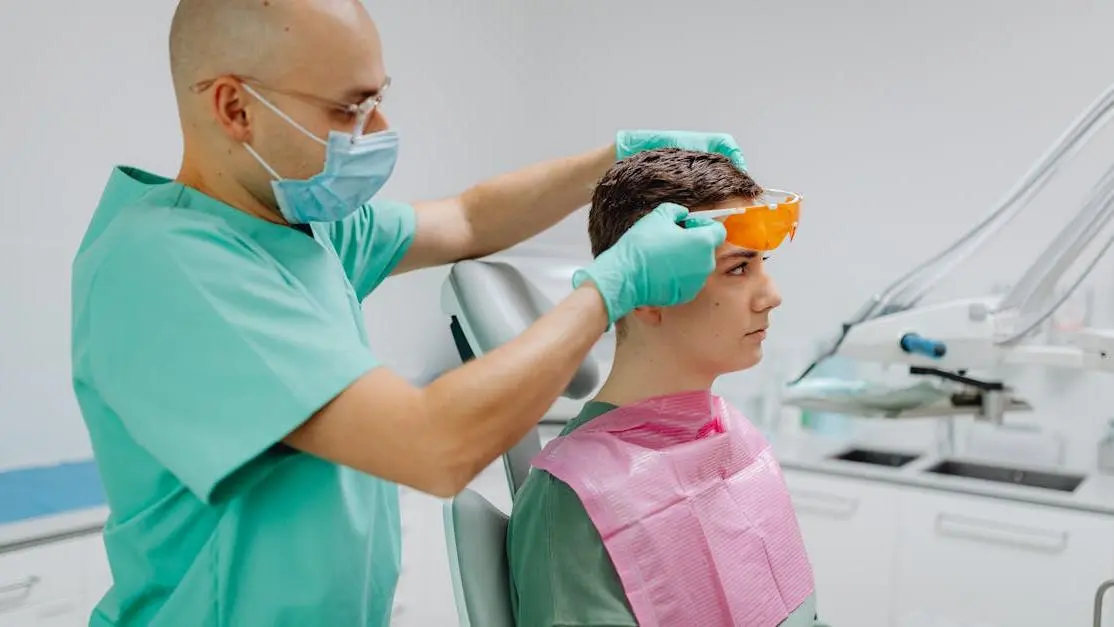When a dental filling cracks, the discomfort can be daunting, yet knowing the steps to take after a dental filling cracks ensures swift action and comfort preservation.
Imagine biting into something and feeling that painful twinge—you’re not alone. To safeguard your smile, we present a practical guide with these key takeaways:
- Recognize telltale signs of a cracked filling and understand their implications.
- Master techniques to maintain oral hygiene without exacerbating damage.
- Discover effective solutions to alleviate pain until you see your dentist.
Identify the Symptoms of a Cracked Dental Filling
Knowing when a dental filling has developed a crack is crucial. Swift action can prevent further complications and ease your worries. Keep an eye out for specific symptoms to address the problem promptly and effectively. Recognizing these signs early leads to a quicker solution and helps maintain your dental health.
Look for These Telltale Symptoms:
- Sensitivity: Increased sensitivity to hot and cold can signal a crack in your filling. If your morning coffee or a cold drink feels more intense than usual, take note.
- Pain While Chewing: Pain during chewing often indicates a structural problem with your filling. It's important to act quickly since continued use may widen the crack.
- Visual Cues: Sometimes, you can spot a crack by observing lines or breaks in the filling. Use a mirror to check, or ask someone to take a look.
- Changes in Bite: A difference in the way your bite feels can result from a compromised filling, suggesting possible shifts in your tooth's structure.
- Swelling or Tenderness: While it could indicate other issues as well, gum swelling near the affected area may accompany a cracked filling and point to potential secondary infections.
Keep track of these symptoms. If you notice any, limit the filling's use and get in touch with a dental professional. Your actions now will pay off later in comfort and clarity.
Avoid Chewing on the Affected Side
Once you suspect a cracked filling, minimizing further damage is key. By shifting your chewing to the unaffected side, you reduce pressure on the compromised area and safeguard your dental health. This simple step can be incredibly effective in maintaining stability until professional treatment can address the issue.
Chewing Tips for Your Comfort
- Switch Sides: Adjust your eating habits by consistently using the unaffected side. This strategy helps prevent the crack from worsening.
- Ease Off Tough Foods: Avoid hard and crunchy foods that might exacerbate the crack. These can include nuts, hard candies, and even ice.
- Choose Softer Options: Opt for softer foods that are gentle on your teeth. Options like yogurt, cooked vegetables, and tender meat are excellent choices during this period.
Focus on Minimizing Risk
Even small habits like staying hydrated can aid in keeping your mouth in optimal condition. Drink plenty of water to keep your mouth clean and support your dental health. These proactive steps play a vital role in protecting the compromised filling, ensuring you steer clear of additional discomfort.
Maintain Oral Hygiene with Extra Care
Oral hygiene remains essential, especially when caring for a compromised filling. Taking care around the damaged area without causing further harm will help maintain healthy gums and teeth in the interim. Balanced hygiene minimizes the chances of infection, setting a solid foundation for your dentist's evaluation.
Precision Matters in Oral Care
- Gentle Brushing: Use a soft-bristled toothbrush and aim to clean the teeth thoroughly yet gently. Avoid harsh scrubbing to prevent irritating the surrounding area.
- Floss with Caution: Floss around the cracked filling cautiously. Stick to a gentle sawing motion to navigate the tight spaces without causing disruption.
- Rinse Effectively: An antiseptic mouthwash can help keep bacteria in check. Use it daily to complement your brushing and flossing routine.
Staying on top of oral hygiene aides in maintaining comfort levels and reduces infection risks. This approach not only ensures a troublesome filling doesn't worsen; it also primes your mouth for when professional care is provided.
Utilize Temporary Pain Relief Methods
Until you can see a professional, managing discomfort becomes paramount. Understanding temporary relief methods can make a significant difference in maintaining everyday functionality. These options are usually accessible and effective, helping manage the situation pending a more permanent fix.
Quick Relief Techniques
- Pain Relievers: Over-the-counter analgesics can serve as a temporary solution. Aspirin or ibuprofen can mitigate pain and reduce inflammation.
- Clove Oil: Dab a small amount of clove oil on a cotton ball and apply it to the affected area. Its natural properties can numb pain.
- Cold Compress: A cold compress near the cheek where the crack resides helps reduce swelling and numb the area.
While not substitute for professional care, employing these pain relief methods provides an immediate reprieve from discomfort. It maintains your ability to carry on with everyday activities while you schedule a dentist appointment.
Schedule an Immediate Dental Appointment
You've recognized the symptoms and taken steps to manage discomfort. Now, scheduling an appointment with your dental provider is the priority. Timely action allows a professional to evaluate the damage's extent, offering clarity and ensuring your dental health remains on the right track. Acting quickly is your best defense against potential complications.
The Importance of Swift Action
Don't delay—cracks in fillings can jeopardize tooth structure, leading to decay or infection if left unchecked. By seeing your dentist promptly, you can avert these risks and preserve your smile. Here’s why it’s crucial to act quickly:
- Assessment First: Expect your dentist to examine the affected area and possibly use X-rays to see how deep the crack is.
- Temporary Solutions: If immediate repair isn’t possible, temporary measures such as a sealant might be offered to protect the area.
- Detailed Discussion: You’ll discuss treatment options and preventive steps post-procedure to avoid recurrence.
Keep your dental health a priority. Booking that appointment is the fastest way to return to a pain-free, healthful state.
Explore Treatment Options for Cracked Fillings
After your visit, understanding the range of treatment options helps you make informed decisions. Your dentist will tailor solutions based on the crack's severity and your overall dental health. Knowing your choices ensures peace of mind and allows you to select the best path for restoring your smile effectively.
Treatment Varieties and Considerations
- Filling Replacement: Often, replacing the cracked filling with new material like composite resin or amalgam does the trick.
- Inlays and Onlays: These partial crowns are perfect for larger cracks, restoring the tooth without the need for a full crown.
- Crowns: In cases with significant damage, a crown might be necessary, offering a sturdy and long-lasting solution.
- Root Canal Therapy: If the crack extends to the tooth's pulp, a root canal might be needed to prevent further issues.
Look at all treatment options and their implications with your dental professional. Understanding every aspect keeps you in control of your oral health journey.
Prevent Future Filling Complications
Once you’ve navigated through the healing process, focus on prevention. Safeguarding fillings from future damage protects your dental well-being and minimizes the risk of returning to the dentist for the same issue. Small changes to daily routines can yield significant, long-term benefits.
Strategies for Filling Longevity
- Regular Check-ups: Make it a habit to visit your dentist every six months. Early detection of issues prevents larger problems.
- Diet Adjustments: Reduce sugary and acidic foods to protect both fillings and your overall dental integrity.
- Guard Against Grinding: If you grind your teeth at night, a custom night guard can prevent undue stress on fillings.
- Sealants and Protective Coatings: Dental sealants can provide an added layer of defense, especially for those prone to filling cracks.
By adopting these preventive measures, you're investing in a healthier, happier smile. It's a straightforward way to keep dental visits routine rather than reactive.
Conclusion
In taking the right steps after a filling cracks, you maintain control over your dental health and ensure a quicker, more efficient recovery. By being vigilant about symptoms, adopting smart practices, and seeking professional guidance promptly, you pave the way for lasting oral health and comfort. Remember, at every step, staying informed and proactive is your best ally in maintaining a resilient and vibrant smile.

